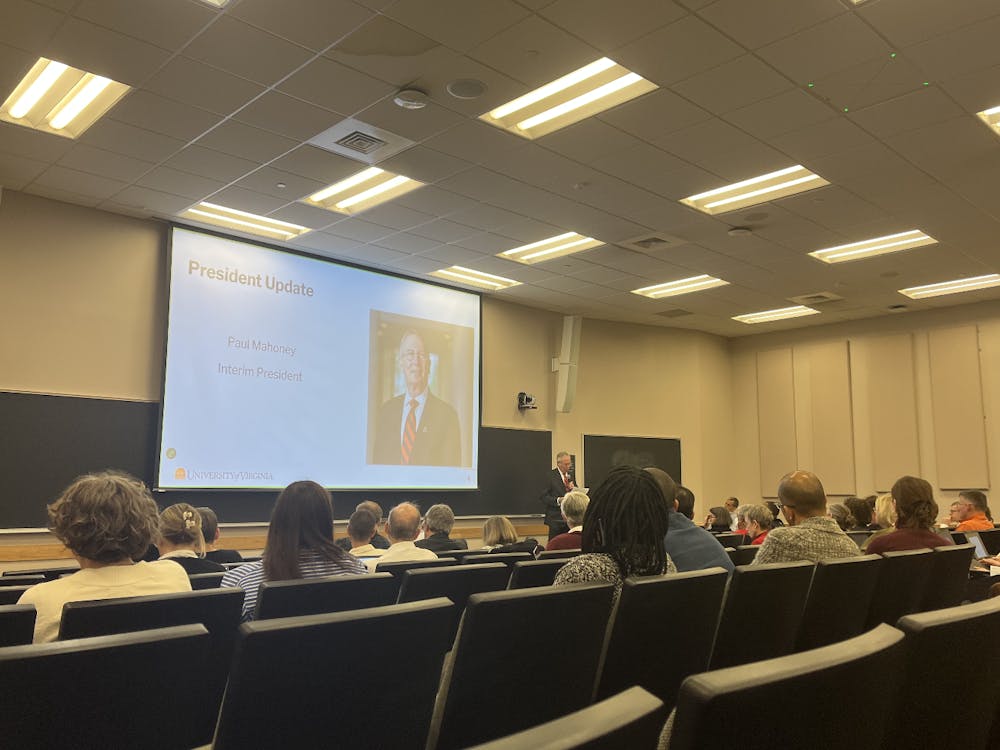The first-ever survey of student attitudes toward race relations at the University has found that black students are twice as likely as white students to perceive racial inequality in student life at the University.
The State of Race Relations, a multicultural University student group founded in November 1999, conducted the survey with the assistance of Government Prof. Paul Freedman and the staff of the Center for Survey Research, which conducts scientific surveys on a regular basis.
The survey, sponsored by organizations including the Office of African American Affairs, the Office of Equal Opportunity Programs, the Arts and Sciences Council and Student Council, interviewed 405 students from February 22 to March 2 of this year.
"The underlying goal of the survey was to pinpoint problems and find workable solutions that will allow us to improve race relations," said Brett Gibson, State of Race Relations vice president and Student Council College representative.
"There are very few white students in cultural organizations and very few black students in established organizations such as Student Council, the Honor Committee and the University Judiciary Committee," Gibson said.
Fifty-six percent of surveyed students said they are not satisfied with the level of racial integration at the University, and 94 percent said they believe University students segregate themselves by race.
Black students may be more likely than white students are to perceive racial bias because "100 years of enslavement and segregation take a long time to undo. Blacks have been in the economic underclass for generations, and it may take a while for them to enter white middle-class society," State of Race Relations President Michael Freedman-Schapp said.
"I think you have to look at the history of this school ... for example, black students know that blacks are brought up on honor charges disproportionately as compared to white students," said Brandon Woods, Black Student Alliance director of issues.
Both black and white students tend to stay within social groups of their own race, Woods said.
"People say, 'African-Americans segregate themselves,' but it's not like white fraternities reach out to black students. It's not like white students say, 'Let's go to a black party, or let's sit at a black table at Newcomb.' It goes both ways," he said.
The survey also found that Asian and Latino students are far more likely than white or black students to have close friends of different races.
In addition, the survey suggests that both University and off-Grounds housing is racially stratified. Of the surveyed students, 6 percent of blacks lived in the McCormick Road Residence Area, while 31 percent lived in the Alderman Road area.
Of students living off-Grounds, Asian students were far more likely to live in JPA or Stadium Road housing, while all other races were more likely to live in the Rugby Road area.
However, the survey indicates the University has achieved numeric diversity and is racially integrated in some other areas covered in the survey, Gibson said. Forty-seven percent of students said the University is more diverse than their high school, and most felt that the student body is tolerant of interracial dating.
Freedman-Schapp and Gibson founded the organization after becoming disillusioned with existing forums for discussing diversity at the University.
"People were not talking about solutions. They were bogged down in accusations, and it was not taking us anywhere," Freedman-Schapp said.
"This is not a solution for self-segregation," Gibson said of the survey.
He said that he hopes students would take from the survey a motivation to improve race relations at the University.
"We need to let everyone know that [their actions] could solve a problem. People just don't know where to start," State member Cheryl Cox said.






